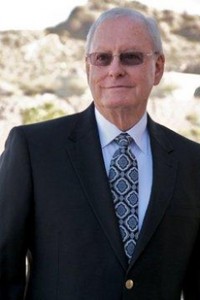November 19, 2014
 A Thought Leader Series Piece
A Thought Leader Series Piece
By Ray Jensen
Note: December marks eight years since the Convention on the Rights of Persons with Disabilities was adopted at the United Nations headquarters in New York. In this essay, Ray Jensen advocates for a new model to address disability issues, with the goal of improving global sustainability through inclusion.
The romantic biography of theoretical physicist Stephen Hawking, The Theory of Everything, was released this month. Its focus is on the relationship of this extraordinary man and Jane Wilde, who weds Hawking and for as long as she is able, embraces the challenges of his life with amyotrophic lateral sclerosis (ALS). From the trailer, it seems that Hawking received, not a death sentence, but a prison sentence when he was a young man, and gradually was translated into a person with a disability. Sometimes it happens that way.
For other people with disabilities, the point of entry is birth, athletic injury, auto accidents or the violence of war. However it arrives, it is usually unexpected, always unwanted, and often the beginning of a journey that can tax the emotional, financial and relational health, not only of the individual with the disability, but of their family and loved ones.
The Larger Picture
December 3, 2014 marks the United Nations’ International Day of Persons with Disabilities (UNIDPD). According to UN data, there are currently over one billion people in the world with some form of disability. UN literature describes this population as the world’s largest minority group. Taken as a group, persons with disabilities are the least educated, have the highest rate of unemployment and are associated with twenty percent of the world’s poverty. In the United States, the divorce rate for parents of children with disabilities exceeds national averages. In many cultures, in particular third world nations, persons with disabilities can be invisible, often hidden by families who experience shame born of ignorance.
The numbers may get larger. A sizable percentage of our aging population will experience some form of disability in their lifetime. The Institute of Medicine projects that by 2030, this growing number of people with disabilities will impact the social and economic resources available for caring for this population.
Relationship to Sustainability
There is a level of consensus that there are three foundational components of sustainability. We must address the environmental, economic and social dimensions that frame our future. For the past quarter century, it seems that our primary focus has been on the existential challenges to the environment. Environmental solutions and programs are rarely separated from their economic implications, and we are increasingly aware of the destructive nature of economic polarization, even as we wrestle with differences of opinion on how to reverse existing trends. Our ‘three-legged sustainability stool’ wobbles on a third leg that appears to suffer from a lack of agreement as to the proper noun to follow the word ‘social.’ Is it social responsibility, social justice, social what?
Clarifying the social agenda is challenging because we can’t easily agree on the values that form the foundation of that agenda. Perhaps we can agree on this: our future is not sustainable if the single largest minority group remains marginalized, with limited opportunity participate and contribute in meaningful ways.
The Way Forward
The theme of this year's UNIDPD is Sustainable Development: the Promise of Technology. This captures my attention, as it touches a number of the University’s design imperatives, which have framed our mission over more than a decade.
Arizona State University has become a model for the kind of institution that can successfully embrace complex challenges. Its Julie Ann Wrigley Global Institute of Sustainability (GIOS) integrates transdisciplinary education, solutions-focused research, global outreach and day-to-day operations – a truly comprehensive approach to the challenge of global sustainability.
In my somewhat biased opinion, GIOS makes an ideal prototype for comprehensively embracing the subject of disability. An initiative modeled after GIOS could include:
- Education – The subject of disability can be applied to virtually any topic and would ideally be integrated across the spectrum of an institution's educational offerings.
- Research – Comprehensive disability research would include a broad range of projects and programs for the purpose of forming collaborative networks for shared funding and resources.
- Outreach – With over 100 nations as signatories to the UN Convention on the Rights of Persons with Disabilities, there is a worldwide opportunity to engage individuals, companies and countries in advancing solutions.
- Operations – An institution should be responsive to the needs of its constituents with disabilities, providing opportunities for learning and growth to both able-bodied and disabled affiliates, while in the process improving outcomes for the institution itself.
Going forward, we must all raise our level of engagement to improve the quality of life and opportunities for persons with disabilities. It may be the most significant civil rights issue of the first half of this century. It is certainly integral to a sustainable future.
About the Author: Ray Jensen is ASU's Associate Vice President for Integrated Business Relationships. For many years, he served as the university's Sustainability Operations Officer, promoting sustainable practices in all areas and developing a long-term strategic plan for institutional sustainability. The father of a son with a disability, Jensen is an advocate for disability services, equity and inclusion.

